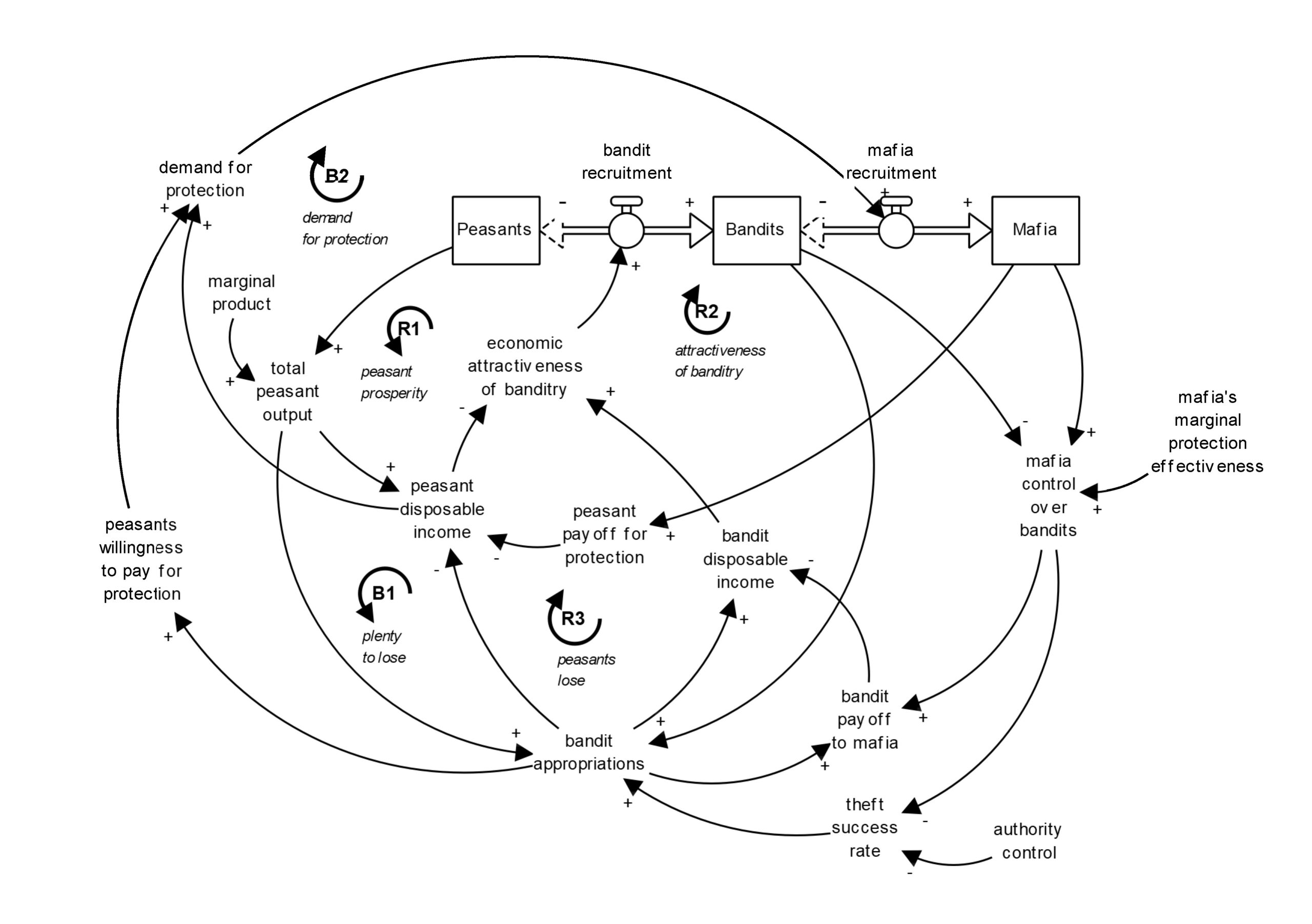During the nineteenth century, Sicily underwent a series of political and land reforms that led to dismantling of large land ownership and culminated in the unification with the Italian state in 1861. But the new Italian government was ineffective at enforcing the rule of law on the island. Banditry and a general sense of lawlessness proliferated. In that environment, the mafia emerged as a private response to the inadequate protection by the state. The mafia offered private protection from bandits to landowners who could not rely on protection and enforcement of property rights by the state. The mafia, however, was not equally active on the entire island. This study uses economic principles to explain the emergence of the mafia in wealthier regions and its absence in the poorer districts despite the greater levels of banditry. We develop a feedback model that incorporates causal relationships between the mafia’s activities, predation, law enforcement, and the profitability of the local businesses. Using computational experiments, we explore how various factors and feedback effects impact the mafia’s activities.

The feedback model. Rectangles are state variables Peasants, Bandits and Mafia. If economy is bad, some peasants turn to banditry; mafia members are recruited from among the bandits. Arrows indicate causal relationships between variables. If an arrow is positive, the relationship between the cause and effect is positive. A negative arrow implies that an increase in one variable causes a decline in the other variable. Circular causal links form reinforcing and balancing feedback loops. A reinforcing loop is shown with the letter R and a balancing loop is shown with the letter B.
Publication
Pavlov, O. and J. Sardell. “Economic Origins of the Sicilian Mafia: A Simulation Feedback Model.” In: Cavana, R.Y, B.C. Dangerfield , O.V. Pavlov, M.J. Radzicki and I.D. Wheat (Eds). Feedback Economics: Economic Modeling with System Dynamics. New York: Springer. 2021: 137-161. Pre-print on SSRN.